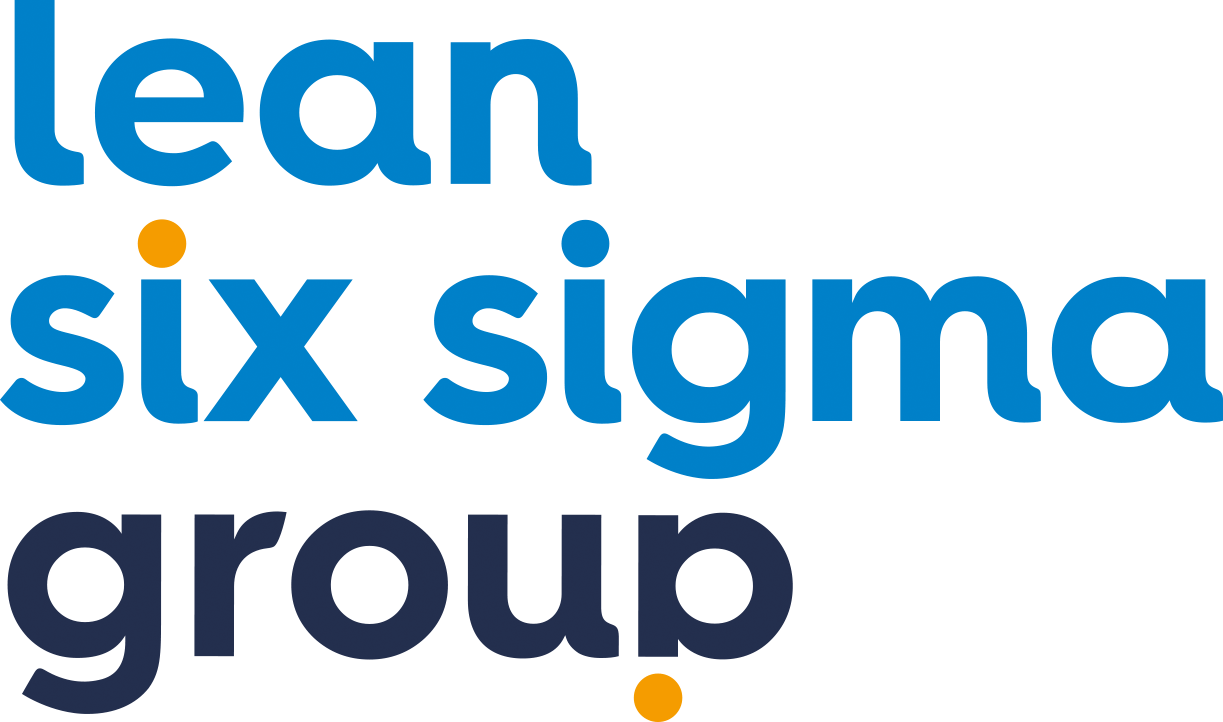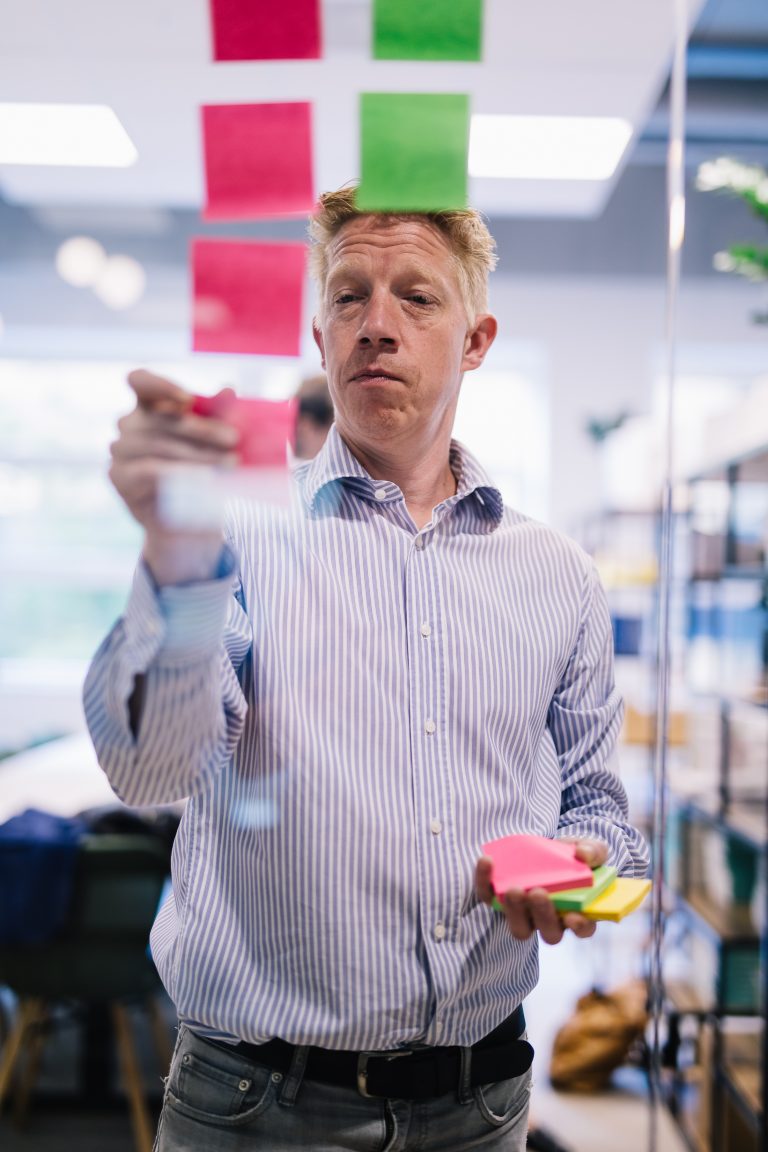Alphabetical list of the important terms of Lean
Quite regularly, there are people participating in trainings who are just getting acquainted with Lean. If you are, the terms occurring within Lean, might be really overwhelming. To help you find your way through these difficulties, we from Lean Six Sigma Group have created a list containing the most common terms of Lean. Are you familiar with all of them?
Terms of Lean: A - K
5S – By applying this technique, you create a more efficient working environment. All five steps start with an S, hence the name.
Seiri (sort) – Do I really need this? Make sure there is a distinction between what you need in order to execute a process and what you do not need. (Re)move whatever aspects you consider unnecessary.
Seiton (set in order) – Order everything and make sure everyone is familiar with the sequence that is set. This way, things can be put where they belong instead of scattering all over your workplace.
Seiso (shine) – Keep the working environment and machines clean. Because keep in mind: filth might be one of the biggest possible distractions.
Seiketsu (standardise) – Assign rules and set up instructions. Agreements keep your working environment set and clear.
Shitsuke (sustain) – Keep maintaining this technique to make sure 5S will be applied on a loop. This is your new way of working.
5x Why – Asking yourself “Why?” repeatedly helps your find the source of the problem.
A3 – Toyota thought of this roadmap to capture and monitor progress in a structured manner. Why is it called A3, you ask? Because this is the measurement of the paper which is used to log all information.
First Time Right – As the name implies, this philosophy aims at delivering a product or service which meets the customer’s requirements the first time.
Flow – This stands for continuity of products and services within a process. It helps to eliminate stock, waiting time and extra transport.
Gemba – As many Lean terms, this word originates from the Japanese language. It stands for “there where”. In Lean, this refers to the entire workplace. To guide you during the visualisation of the current situation and creation of a better understanding of the execution of processes and corresponding challenges, a “Gemba walk” might help.
Just-in-Time – This philosophy strives at the perfect timing, from a client’s perspective, of delivering products or services.
Kaizen – This Japanese term means improving continuously. Create an environment where employees are looking for possible improvements everyday. Make sure these improvements are actually carried through.
Kanban – Red flag. Optimisation of stock is the main principle of Kanban. Whenever something is running out of stock, a signal is sent in order to make sure only new things are ordered when necessary. This makes sure packed inventory is prevented.
KANO-model – Noriako Kano created this model to help you chart and prioritise your expectations, priorities and customers’ requirements. The level of satisfaction is plotted against the extent to which one of the needs is met.
Terms of Lean: L - P
Lean – Yes, the term that fulfills the central role in this list. Lean is a philosophy which focuses on making business processes more efficient. The actual definition is “slim organisation”, without any waste.
Makigami – This actually means roll of paper. It is applied within Lean to visualise processes without physical product, e.g. administration. It is also called the “Brown Paper” session.
Muda – Japanese for waste. This is part of 3M – Muda, Muri and Mura – which altogether is used to point out features of processes that are uncalled for. Waste basically means an activity that does not add value to a product, service or process.
Muri – To stay within the lines of 3M, this Japanese word stands for a bottleneck within the organisation, which should obviously be prevented. A bottleneck means there is more workload than can be managed.
Mura – The last term of 3M can be defined as a skewed distribution. This comes down to an uneven workload of employees or machines.
Poka Yoke – “Mistake proofing” is the correct translation of the Japanese term. This limits the influence of human errors during processes. These mistakes are detected before becoming actual failures.
Pull – Pull means only producing or delivering when necessary. This decreases the amount of stock. Often, this is combined with the Kanban-principle.
Terms of Lean: S - Z
SIPOC – To map processes with important stakeholders, the SIPOC tool can be used. This stands for Supplier, Input, Process, Output and Customer.
Cycle Time – The pace of a (production) process to meet the customer demand is determined by the cycle time. Imagine this being too long, then the stock as well as the waiting time of the customer increases.
TIMWOODS – This acronym might help you remember the 8 forms of waste within a process:: Transport, Inventory, Motion, Waiting, Overproduction, Overprocessing, Defects, Skills
TPS – TPS stands for Toyota Production Systems. This is a system of production created by Toyota. And even more important, this is where Lean originates from.
Improvement board – This aids to keep improving your business or organisation. It visualises ideas about improvement of your employees.
Waste – Just as discussed at Seiri from the 5S technique, some activities are almost useless to the customer or organisation. This is called waste. And please make sure to eliminate those.
Value Stream Analysis – This technique focuses on customer value. Every step of a process is checked thoroughly, while laying focus on how they contribute to the customer value.
Would you like to know more?
Did this blog trigger your curiosity and would you like to know more? Would you like to learn how to apply these tools and techniques? Make sure to follow one of our Green Belt Trainings.




